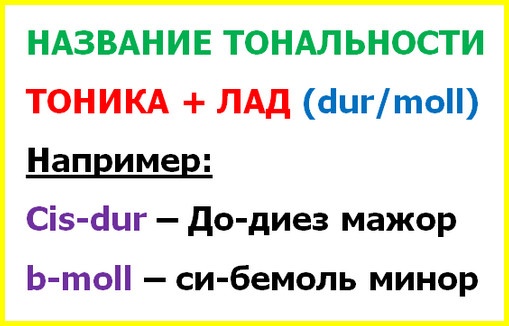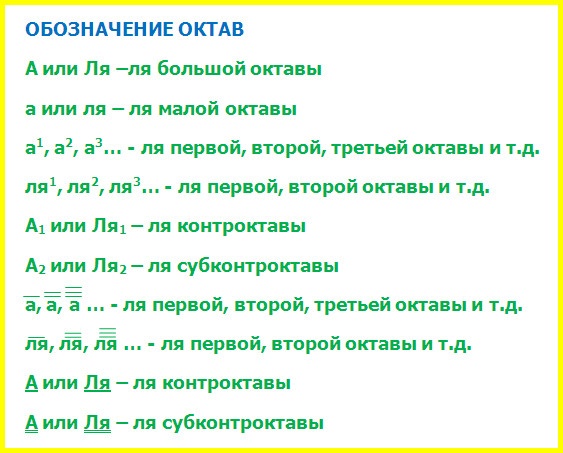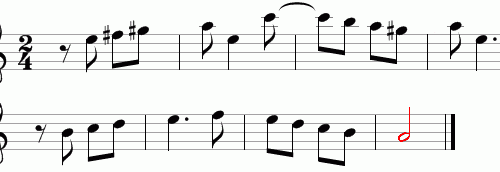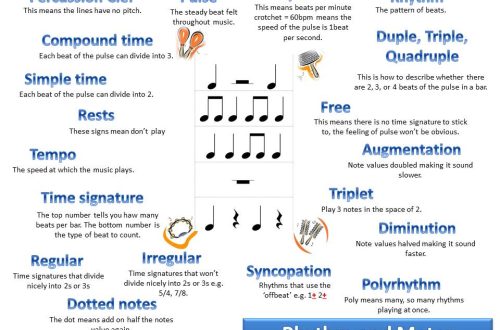Letter designation of sounds and keys
Contents
In music, there are two systems for designating pitch – letter and syllabic. Everyone knows syllabic designations, they are familiar to the ear – this is DO RE MI FA SOL LA SI. But there is another way – the designation of sounds using the letters of the Latin alphabet. Moreover, the letter system for designating sounds arose even historically earlier than the syllabic one.
So, according to the letter system, musical sounds are denoted by the following letters of the Latin alphabet: DO – C (ce), RE – D (de), MI – E (e), FA (ef) – F, SALT – G (ge), LA – A (a), SI – H (ha).

Interestingly, at the time when the letter system was being formed, the musical scale began with the sound LA, and not with the sound DO. That is why, the first letter of the alphabet A corresponds exactly to the sound LA, and not TO. Another feature of this old system is the B-flat sound in the main scale, it is denoted by the letter B. And the letter H was later assigned to the SI note, which is the main step of the modern scale.

Sharps and flats according to the letter system
Raised and lowered steps, that is, sharps and flats, can also be depicted in the letter system of sounds. In order to say about a sharp, the suffix IS (is) is added to the letter of the note. And for flats, another suffix is uXNUMXbuXNUMXbused – ES (es).
For example, C-SHARP is CIS (cis), and C-FLAT is CES (ces).
 However, there are a few exceptions to these rules that you need to remember. All of them relate to the designation of flat notes. The MI-FLAT sound in the letter system looks like EES, but in practice one, the middle vowel is reduced and thus the designation ES is obtained. Exactly the same story occurs with the sound A-flat, in its designation AES one vowel sound is reduced and the result is simply AS.
However, there are a few exceptions to these rules that you need to remember. All of them relate to the designation of flat notes. The MI-FLAT sound in the letter system looks like EES, but in practice one, the middle vowel is reduced and thus the designation ES is obtained. Exactly the same story occurs with the sound A-flat, in its designation AES one vowel sound is reduced and the result is simply AS.
And one more exception to the rule is connected purely with historical reasons. The B-flat sound is usually referred to as B, not HES.
Double sharps and double flats by letter system
 When it comes to double reductions and reductions, that is, double-sharp and double-flat signs, the principle of reflecting them in the letter system is very simple and logical. A double sharp is two sharps, which means two suffixes IS – ISIS, a double flat is two flats and, accordingly, two suffixes ES – ESES. Moreover, the rule with double-flats also applies to the sound SI-DOUBLE-FLAT, which is indicated in this case according to the general rule – HESES.
When it comes to double reductions and reductions, that is, double-sharp and double-flat signs, the principle of reflecting them in the letter system is very simple and logical. A double sharp is two sharps, which means two suffixes IS – ISIS, a double flat is two flats and, accordingly, two suffixes ES – ESES. Moreover, the rule with double-flats also applies to the sound SI-DOUBLE-FLAT, which is indicated in this case according to the general rule – HESES.
Thus, with the help of the letter system, it is possible to designate not only the basic sounds, but also sharps with flats, as well as double sharps and double flats. Let’s summarize all these ways of notation in a table:
Table of letter designations of sounds
| Note | Sharp | double sharp | Flat | double flat | |
| BEFORE | c | Are you there | cut off | ces | cessation |
| RE | d | dis | disis | of | of those |
| MI | e | behold | will go | es | eses |
| F | f | fis | physical | his | feces |
| SALT | g | gis | broadcasted | ges | geses |
| LA | a | ais | aisis | as | ases |
| SI | h | his | hissed | b | heses |
Letter designation of keys
In the name of any key – major or minor – two elements are always communicated: this is its main sound (tonic) and its modal inclination (major or minor). The same structure is always reflected in the letter system. The tonic is designated as a normal sound, with only one feature – for major keys, the tonic is written with a capital, capital letter, and for minor keys, on the contrary, with a small, lowercase letter.
Special words are used to indicate the modal mood. For major – the word DUR, which is an abbreviation for the Latin term DURUS (translated means “hard”). For minor keys, the word MOLL is used, translated from Latin, this term means “soft”.

Designation of octaves by letter system
The observant reader, perhaps, from the very beginning, wondered how, in the letter system, to distinguish between the sounds of a small octave and, for example, the second one, or the first and the big one. It turns out that everything is provided for, and there are rules for designating different octaves in the letter system. Only many for some reason forget about them, while others have not heard about it at all. Let’s figure it out.
Everything here is actually quite simple. If you still do not know the names of all octaves well, then we recommend that you study the material Arrangement of sounds on the piano keyboard, where this issue is considered in some detail.
So the rules are:
- The sounds of a large octave are written in capital letters.
- The sounds of a small octave are written, on the contrary, in lowercase, small letters.
- To designate the sounds of the first, second, third and subsequent upper octaves, small letters are used, to which either superscripts with the octave number or dashes located above the letter are added. In this case, the number of strokes corresponds to the octave number (one stroke – the first octave, two strokes – the second, etc.).
- To designate the sounds of the counteroctave and subcontroctave, capital letters are used, that is, capital letters, to which are added either the numbers 1 or 2 (1 for the counteroctave and 2 for the subcontroctave) in the subscript, or also dashes-strokes, only naturally from below.
In the figure you can see examples of the sound LA with different octave designations. By the way, the same octave principle has exactly the same effect in the syllabic system of designating sounds. Therefore, there will be several examples of designation at once.

Dear friends, if you still have questions about this or any other musical-theoretical topic, please write them in the comments to this material.
And now, for a better assimilation of the lesson, we suggest that you watch a video on the topic and recommend that you complete the exercises that will be offered there.





